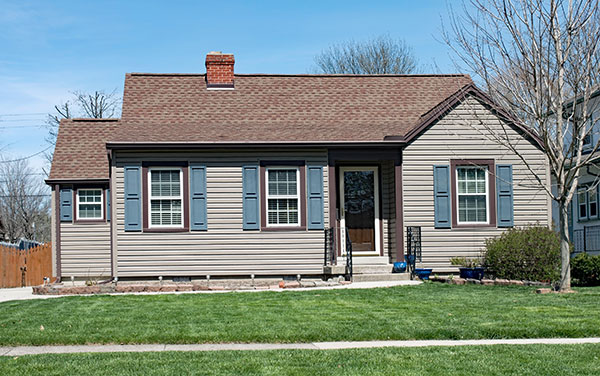Aluminum Siding 101: Everything You Need To Know
Author: Sheryll Poe | April 26, 2024
Installing new siding on a home is an investment that can last a long time. In fact, when properly installed and regularly maintained, new siding on a home can last for decades. As a residential contractor, it's important for you to know the ins and outs of aluminum siding so you can make informed recommendations to your clients.
Here's everything you need to know about this type of siding for residential projects.

What Is Aluminum Siding?
Aluminum is a soft metal that has been a popular choice for home siding for decades. It comes in horizontal and vertical panels, allowing the homeowner to custom-design the outward appearance of a home. Its thickness is measured in gauges — the standard is 44 gauge, but a stronger (and more expensive) option is 53 gauge.
When it comes to the cost, several factors are in play, including the square footage of the home and the gauge. However, the cost of aluminum is comparable to other popular siding materials, including vinyl.
What Are the Benefits of Aluminum Siding?
Besides being waterproof, aluminum is durable. Good-quality, high-gauge aluminum siding can last at least 35 years, if not longer. And when it does come time to replace it, aluminum products can be recycled, making it environmentally friendly. It's also versatile since it can be painted, allowing homeowners to easily switch up the look of their home if they want to.
Aluminum doesn't crack in extreme cold or warp in the heat, making it a good choice for both homes located in cold areas of the country and hotter climates. And because it's waterproof and doesn't rust or absorb moisture, aluminum is also a good product choice for those who live in coastal areas and areas with heavy rain or salt spray.
Aluminum siding also has insulating properties, which means that the siding helps maintain the home's internal heat in the winter and keeps in air conditioning in the summer, saving homeowners money on heating and cooling costs.
What Are the Limitations?
From an aesthetics and maintenance standpoint, aluminum requires a fair amount of upkeep. It dents and scratches easily, making it susceptible to hail, wind, falling tree branches and wayward soccer balls. It can also be difficult to repair, so panels may need to be replaced if they do get damaged. Aluminum siding is also prone to age and fade, especially in areas with extreme sun, and needs to be repainted every 10 years or so.
Aluminum vs. Vinyl Siding
Comparing aluminum vs. vinyl siding? Both materials have their benefits but vary somewhat in durability, insulation, maintenance, ease of installation, aesthetics and cost. For a professional residential roofer, both aluminum and vinyl siding are relatively easy to install. In some cases, lightweight aluminum may be easier to install than vinyl, meaning less time on a project and lower labor costs.
For many homeowners, the right choice could come down to costs. Aluminum offers a slightly lower upfront cost, but vinyl makes up for the additional investment through its enhanced durability, which can help boost the home's resale value. Be sure to go over both options with a homeowner thoroughly.